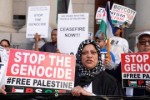How hardships and hashtags combined to fuel Nepal’s violent response to social media ban
Days of unrest in Nepal have resulted in the ousting of a deeply unpopular government and the deaths of at least 50 people.
The Gen Z-led protests – so-called due to the predominance of young Nepalese among the demonstrators – appeared to have quieted down with the appointment on Sept. 12, 2025, of a new interim leader and early elections.
But the protests leave behind dozens of burned government offices, destroyed business centers and financial losses estimated in the billions of dollars.
The experience has also underscored the importance of social media in Nepal, as well as the consequences of government attempts to control the flow of online information.
I study the economic, social and political impacts of social media and other emerging technologies. Being based in Kathmandu, I have watched firsthand as what began as a protest over a short-lived ban on social media snowballed into something far greater, leading to the toppling of Prime Minister K.P. Sharma Oli.
Indeed, social media has played a crucial role in this ongoing turmoil in two ways. First, the government’s decision on Sept. 4 to ban social platforms served as the immediate catalyst to the unrest. It provoked anger among a generation for whom digital spaces are central not only to communication, identity and political expression, but also to education and economic opportunities.
And second, the pervasive use of these platforms primed the nation’s youth for this moment of protest. It heightened Gen Z’s awareness of the country’s entrenched social, economic and political problems. By sharing stories of corruption, privilege and inequality, social media not only informed but also galvanized Nepal’s youth, motivating collective mobilization against the country’s systemic injustice.
As with many other nations, social media is central to daily life and commerce in Nepal, a landlocked nation of 30 million people situated between two Asian giants: China and India.
As........






















 Toi Staff
Toi Staff Gideon Levy
Gideon Levy Donald Earl Collins
Donald Earl Collins Tarik Cyril Amar
Tarik Cyril Amar Daoud Kuttab
Daoud Kuttab Jason Hickel
Jason Hickel Yossi Klein Halevi
Yossi Klein Halevi Somdeep Sen
Somdeep Sen Stefano Lusa
Stefano Lusa Sabine Sterk
Sabine Sterk
